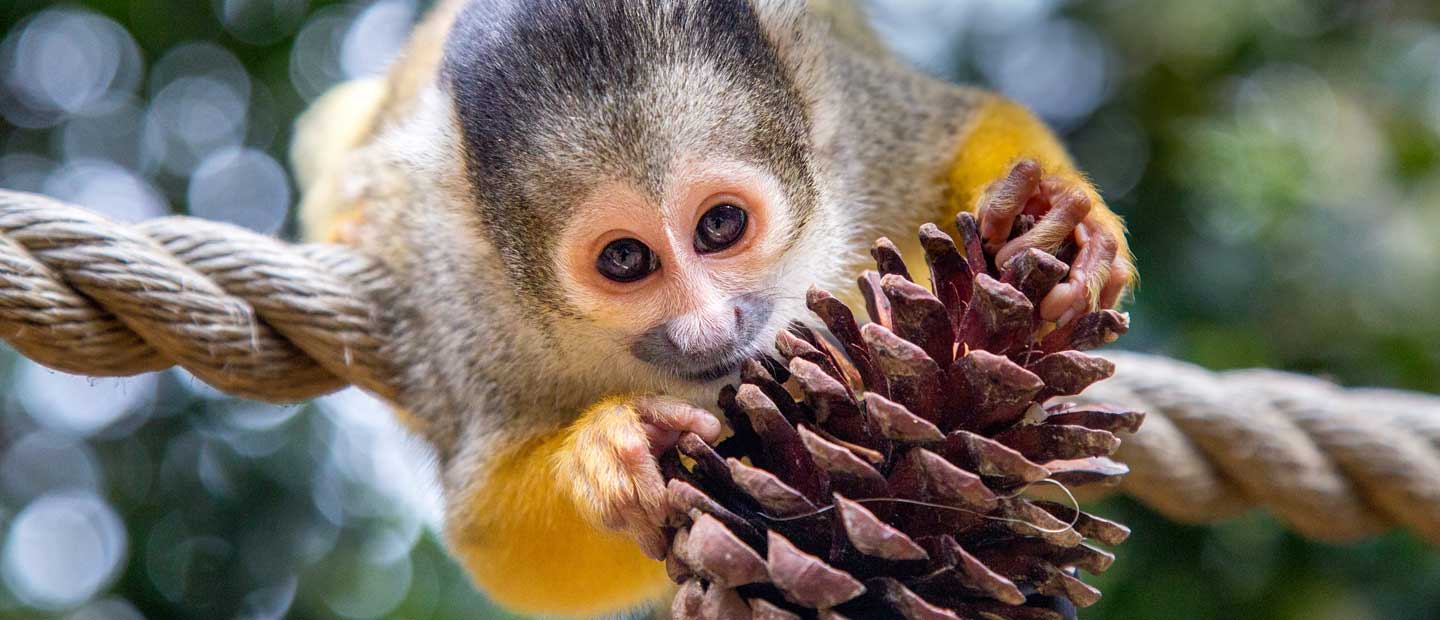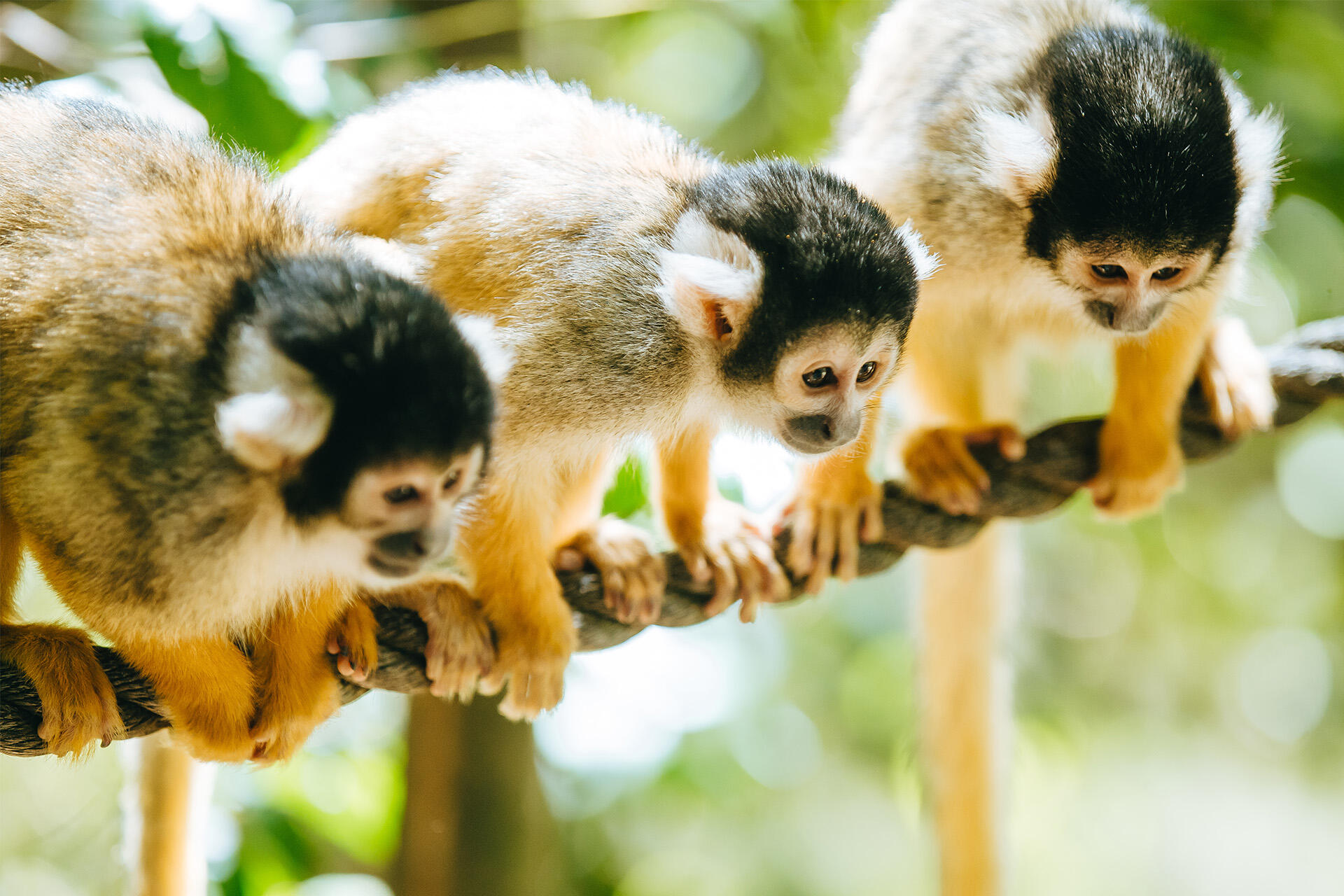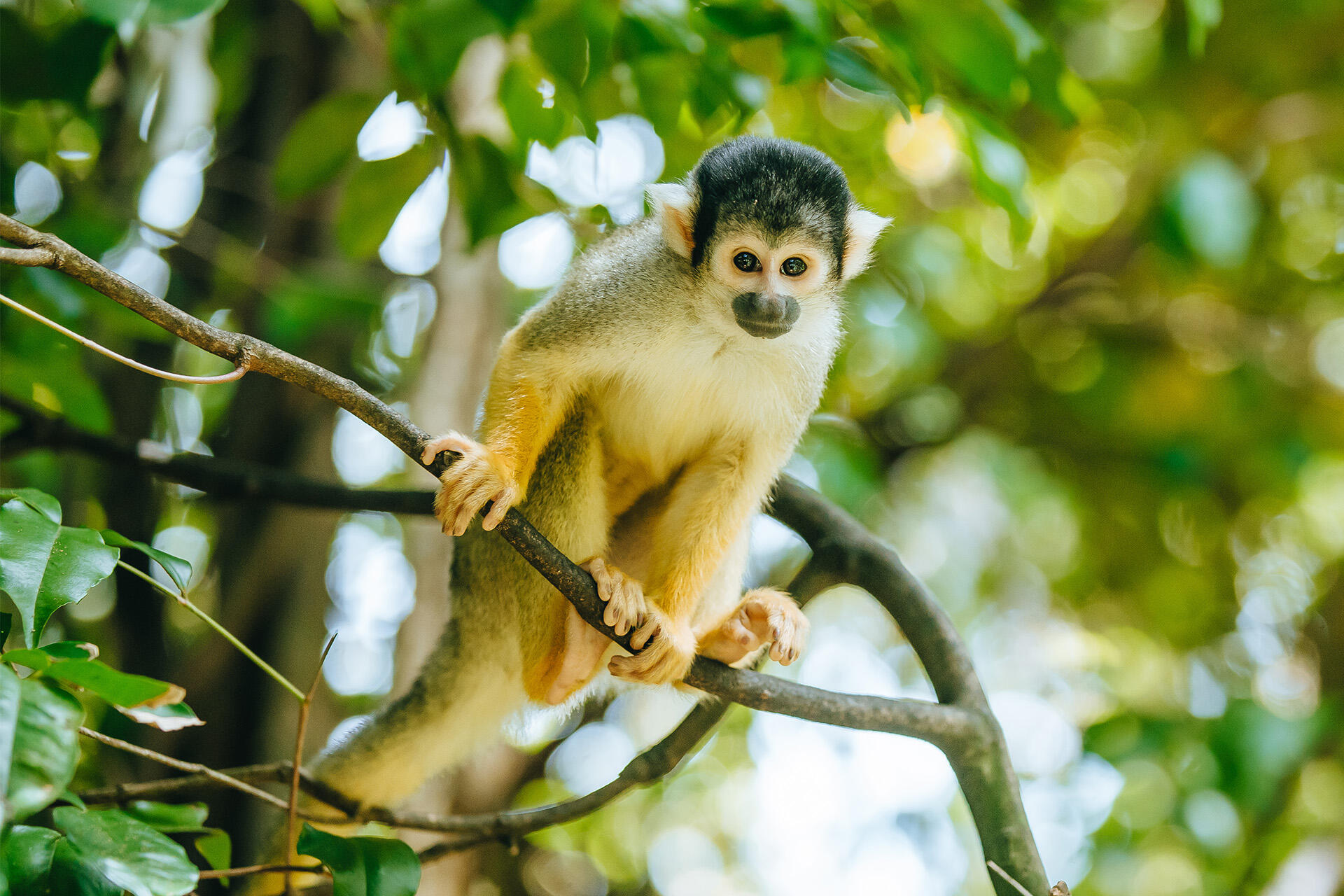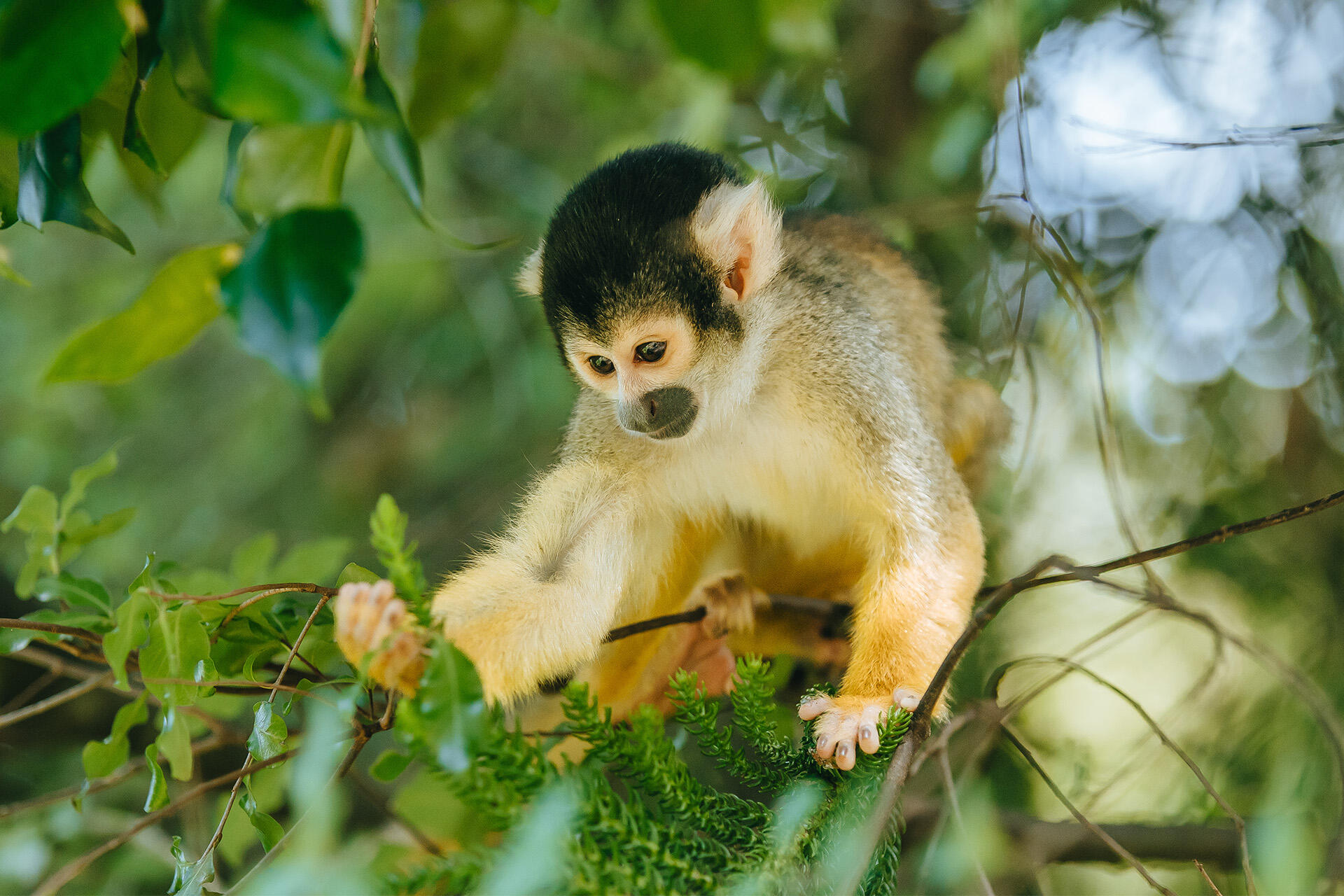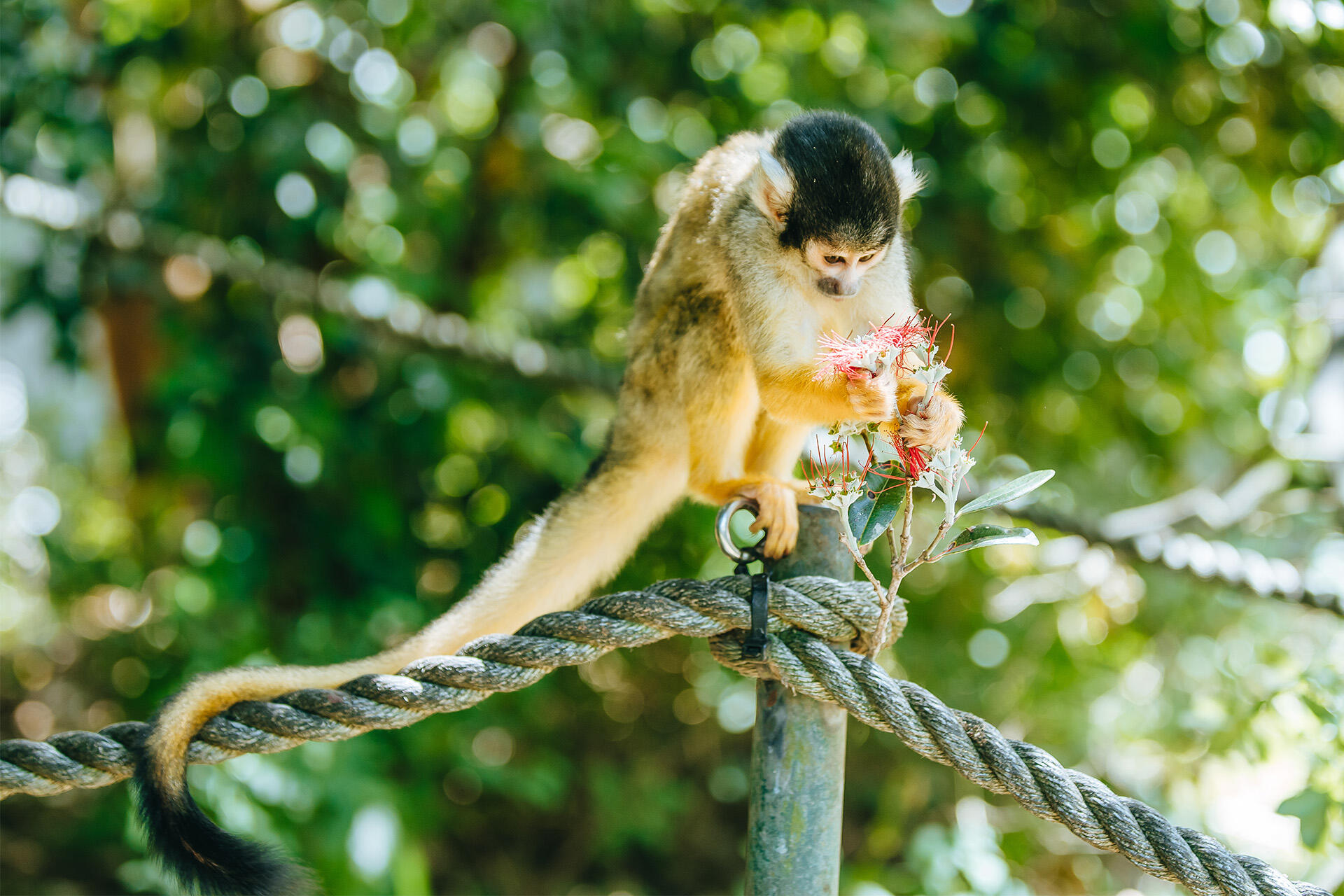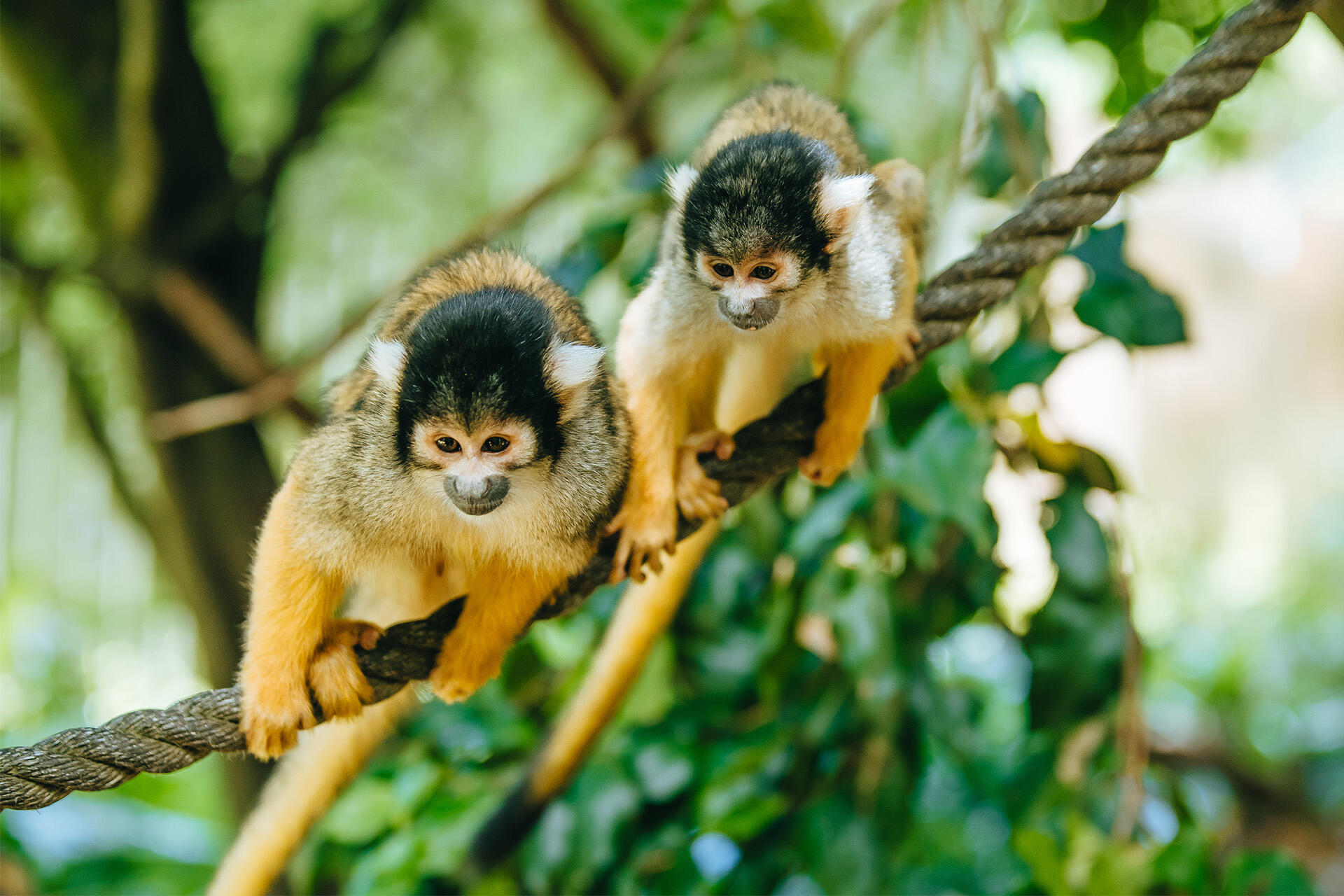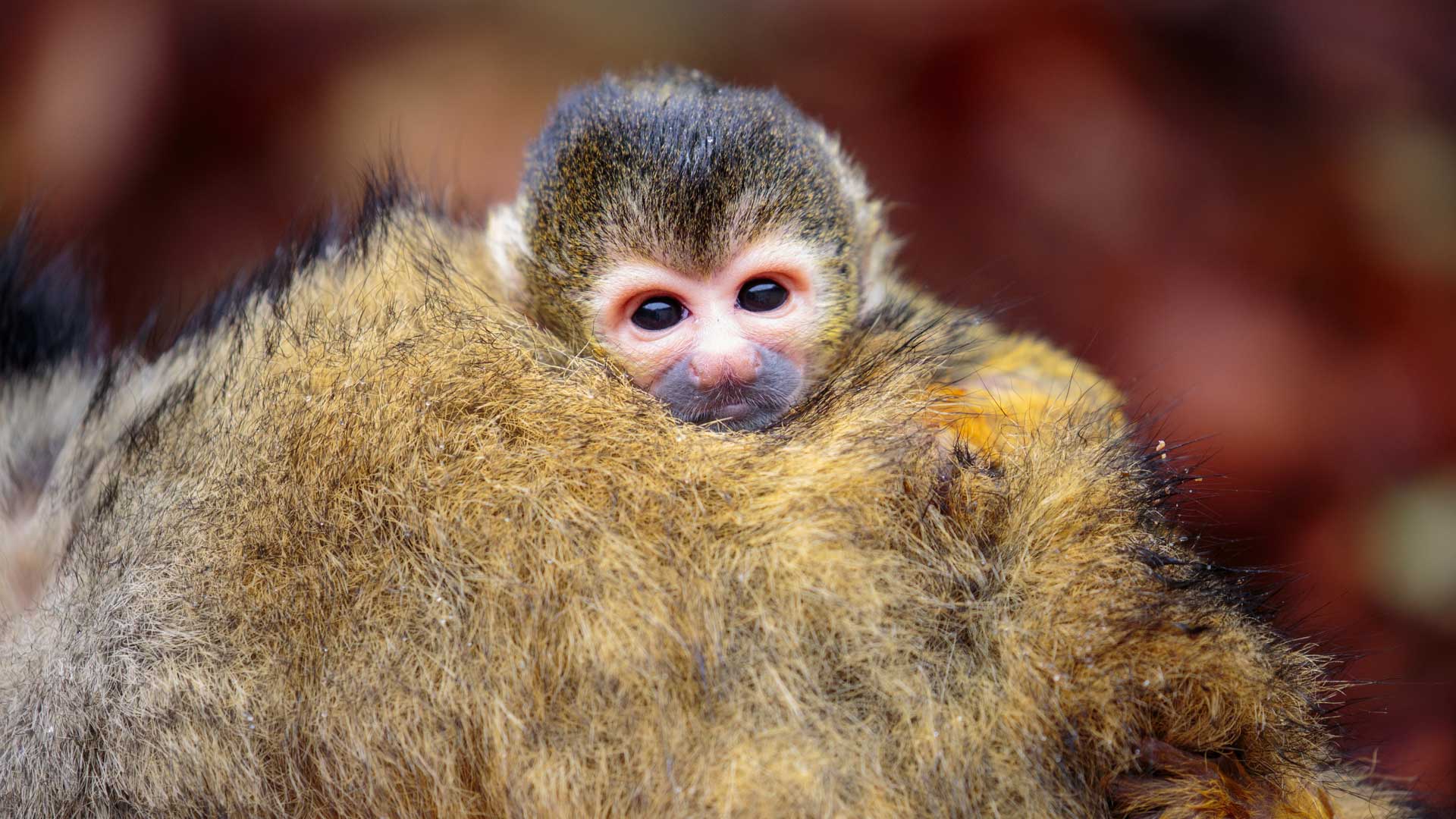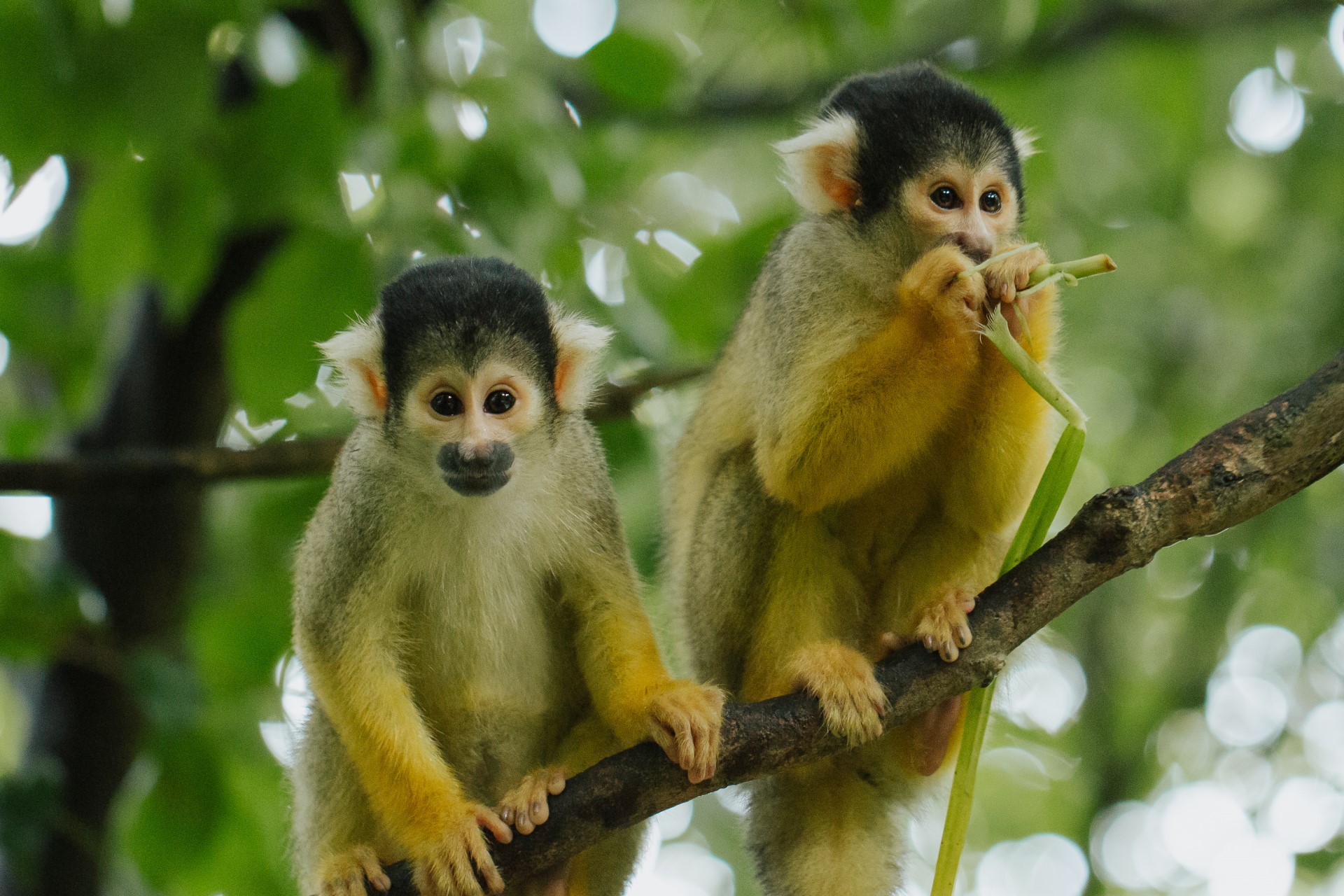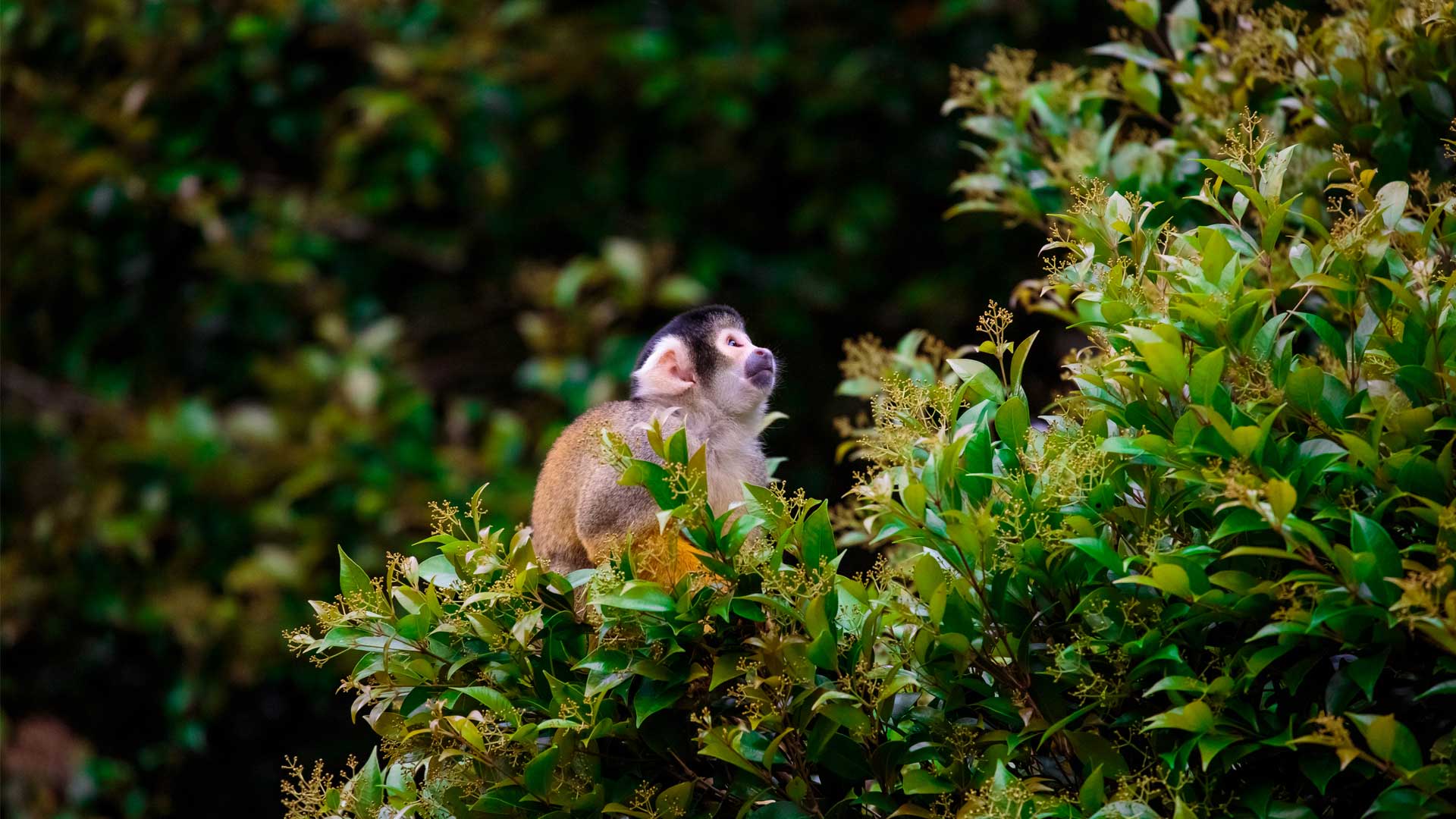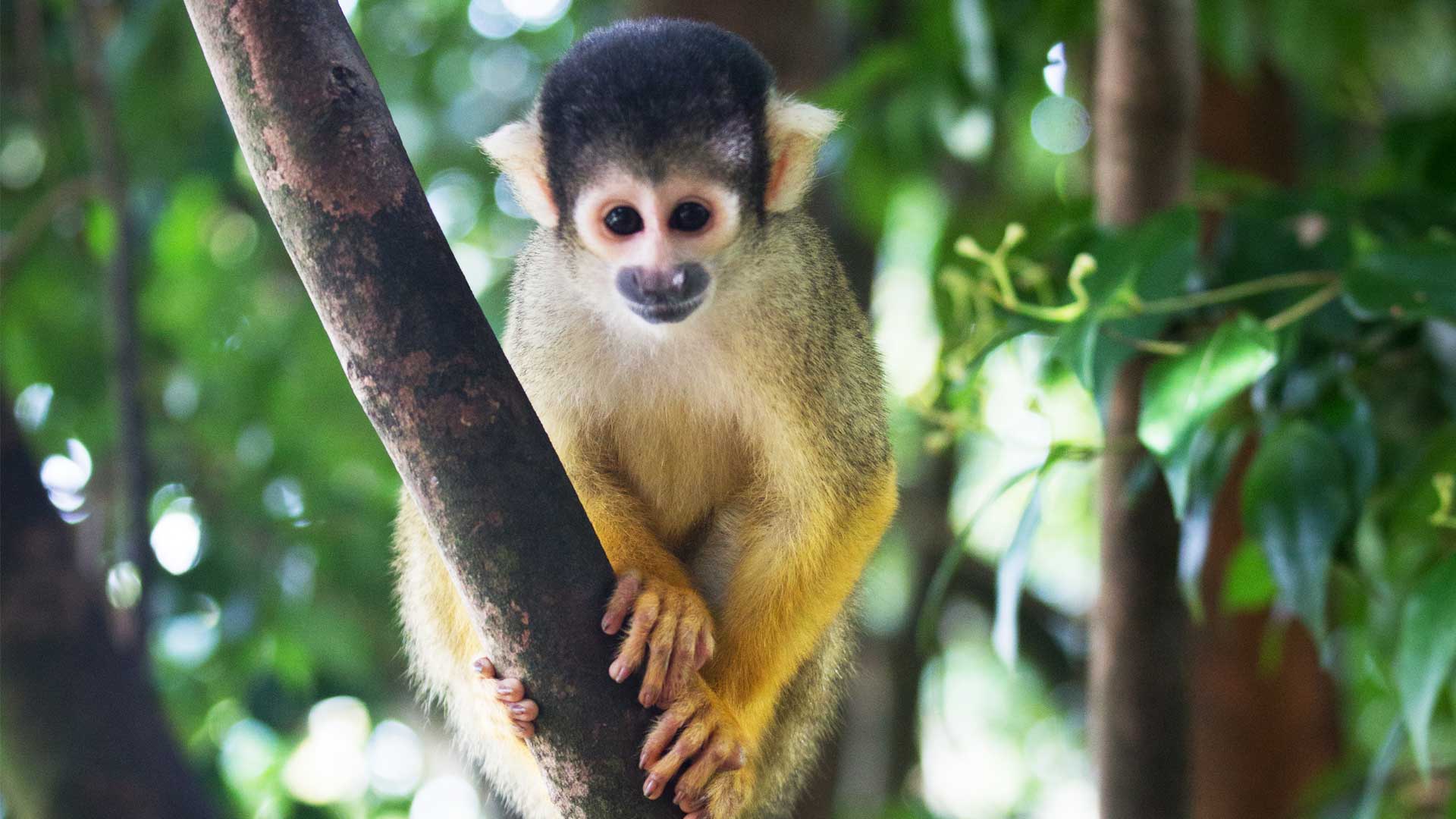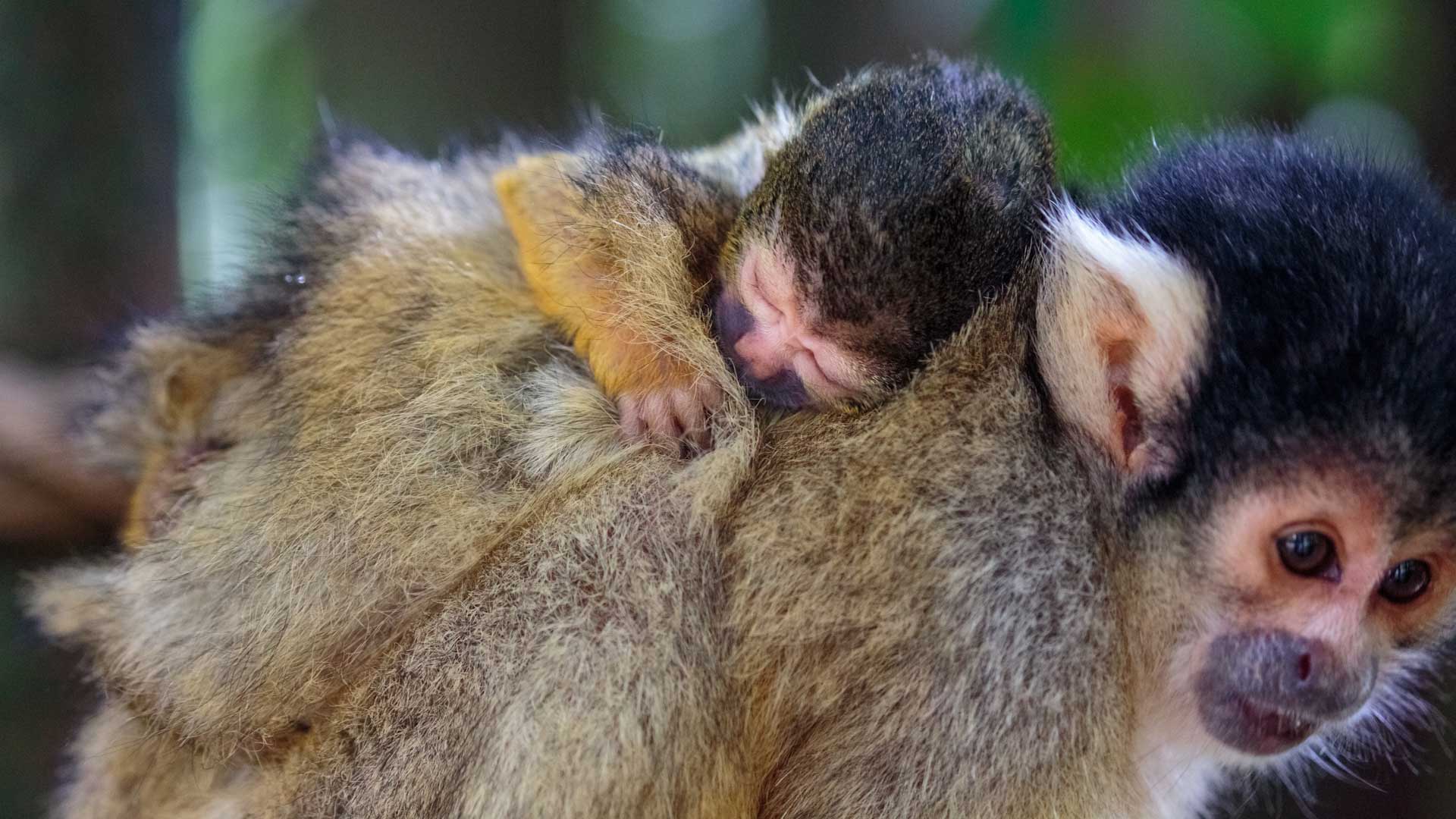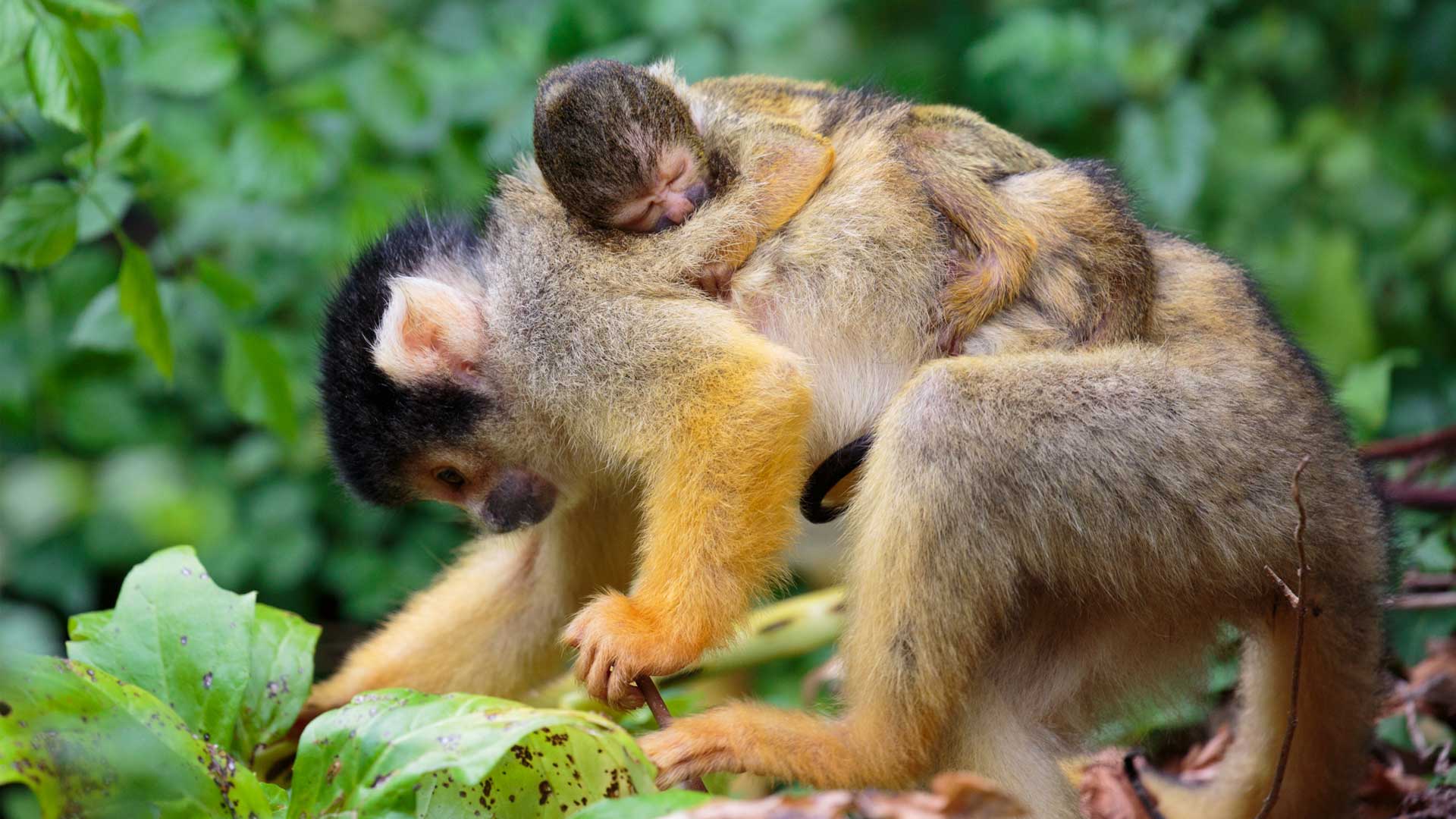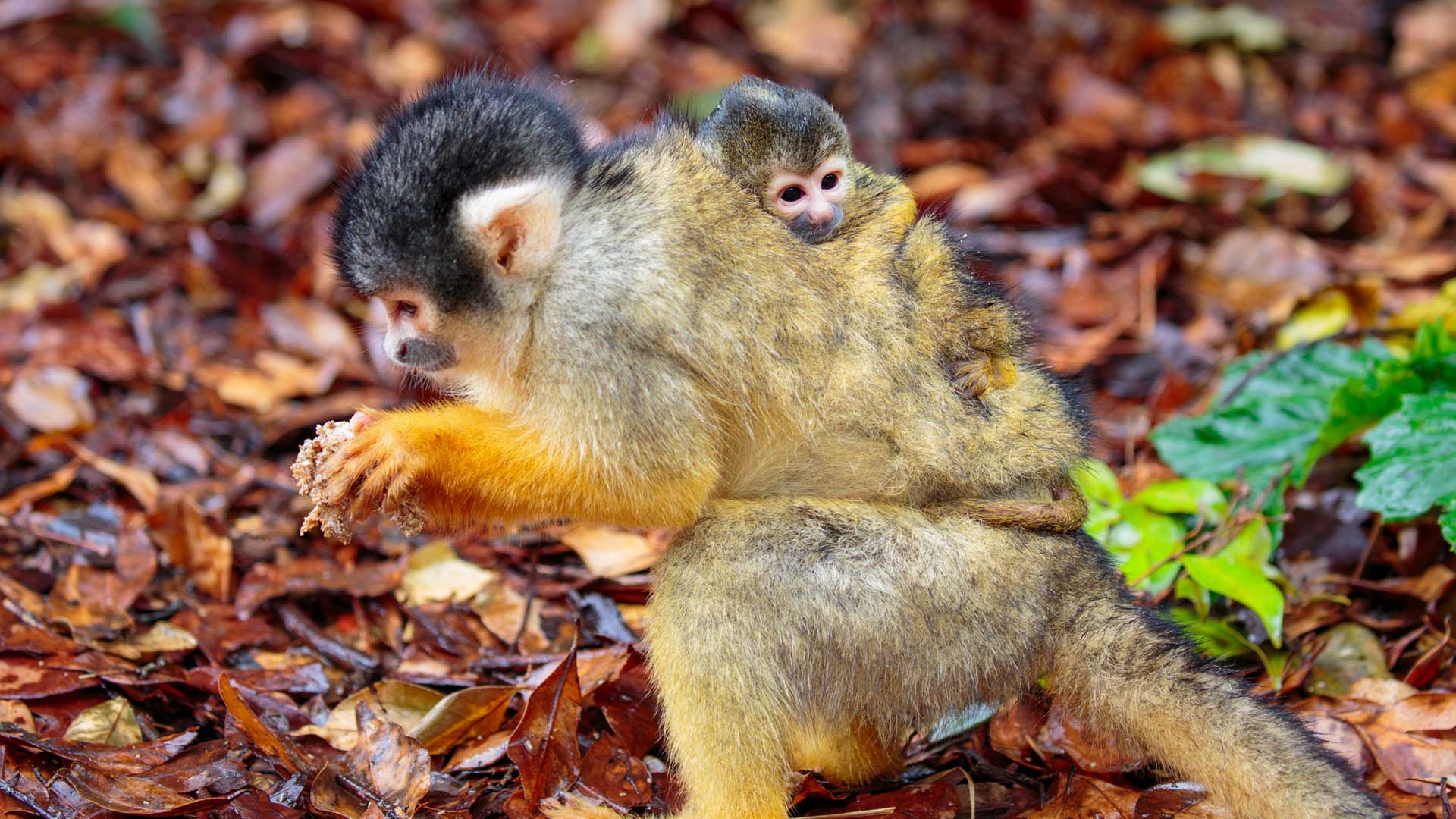Territorial Tinkles
Did you know these monkeys have come up with innovative ways to use their urine? Squirrel monkeys will urinate on their hands and rub urine on themselves and specific places within their habitats for a range of reasons.
In the summer, rubbing urine on their bodies helps them to thermoregulate and cool down. They also rub it on their hands and feet to get a better grip when climbing in the trees, and to spread their scent as they move around the forest. The scent helps them keep track of each other – like a natural GPS system! Similarly, by rubbing urine on the trees where they live, they can signal to other squirrel monkeys that this is their area.
Squirrel monkeys are highly territorial, so this puts other groups on notice that this area is occupied.
Flexible living
While these primates may be territorial, but they are also very adaptable to living in different habitats. Due to predation risk from animals such as hawks, they normally avoid living in the upper canopy level of the forest and are mostly found in the mid-canopy or foraging in the shrub layer or forest floor.
Squirrel monkeys are able to live in a forest that has been changed by events like human intervention or extreme weather. This flexibility to settle in new areas is a key reason that wild populations continue to survive despite deforestation and habitat loss. Squirrel monkeys require a varied diet and deforestation can threaten other species in the ecosystem, such as invertebrates and plants that they rely on for survival.


